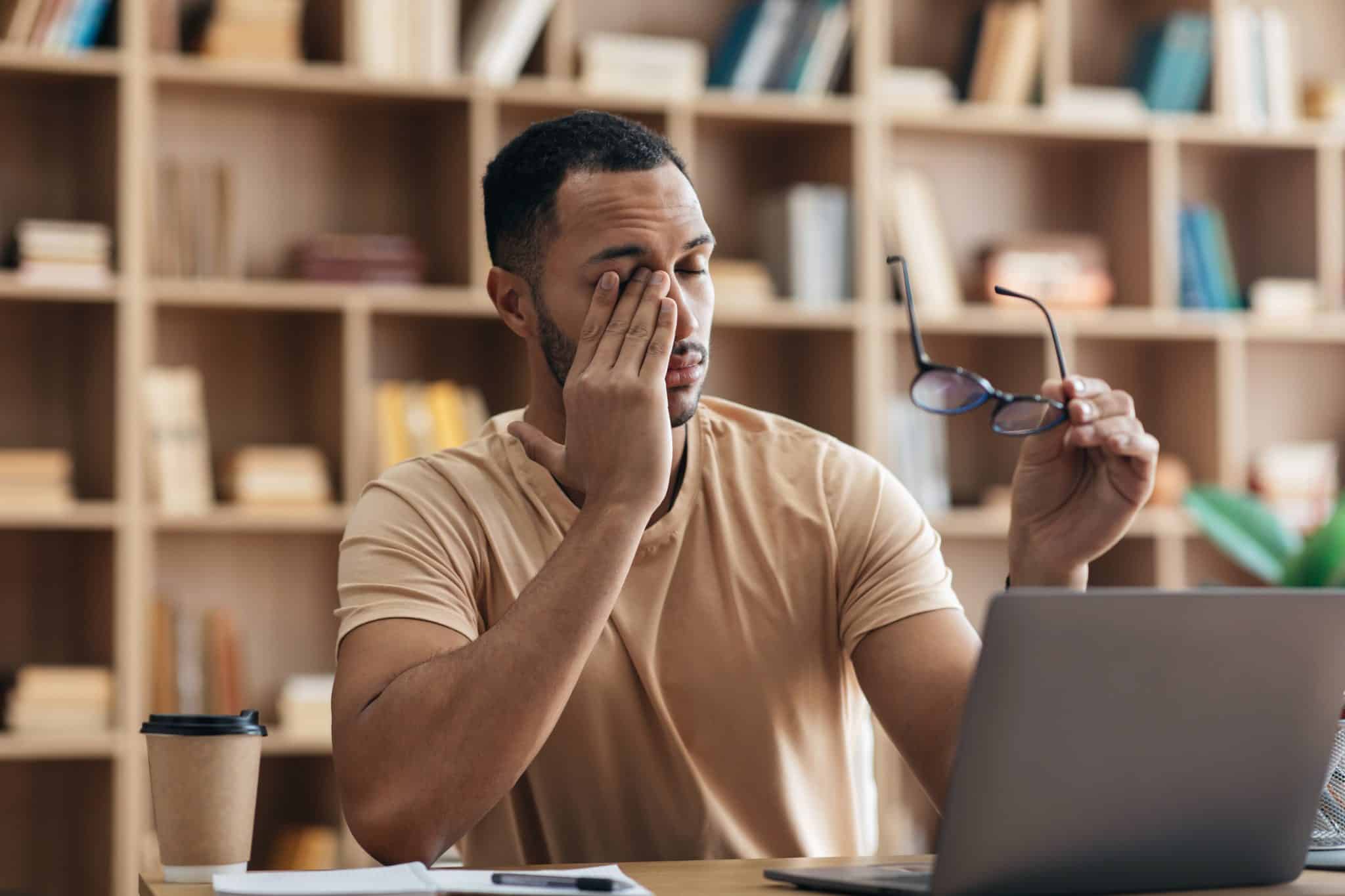Experiencing blurry vision, dry eyes, or headaches after hours on your computer? You might be suffering from Computer Vision Syndrome (CVS), also called digital eye strain, a common condition affecting millions who spend extended time on screens.
From smartphones to laptops, digital screens are an essential part of everyday life. Unfortunately, this constant screen exposure can take a toll on your eyes, even if you’ve never had vision problems before.
Computer vision syndrome—sometimes referred to as digital eye strain—is more than just a minor annoyance. Over time, it can lead to chronic discomfort and worsen other underlying vision issues if left unaddressed.
At Eye Clinic & Aesthetics of Provo, we have the expertise to diagnose and treat this condition so you can experience relief and avoid long-term vision problems.
What Is Computer Vision Syndrome?
Computer Vision Syndrome is a collection of vision-related symptoms caused by prolonged use of digital screens. These symptoms usually occur after two or more hours of continuous screen time and can include:
- Blurry vision
- Eye strain and discomfort
- Headaches
- Dry, scratchy, or burning eyes
- Neck and shoulder tension and pain
While these symptoms may start off mild, they can become more severe if ignored. That’s why it’s important to seek professional help if you’re experiencing any of these issues.
How a Comprehensive Eye Exam Can Help
Diagnosing CVS properly begins with a comprehensive eye exam. Dr. Lewis and Dr. Smith at Eye Clinic & Aesthetics of Provo go beyond just checking your vision prescription. They look at your full eye health profile, including any pre-existing conditions such as astigmatism, presbyopia, diabetic eye complications, or general aging of the eyes. All of these can make symptoms of computer eye strain worse.
During your visit, the doctors will perform a series of tests, such as:
- Visual acuity testing to measure how clearly you see
- Refraction testing to determine the most effective lens prescription
- Focus and eye coordination assessments, including Neurolens® for identifying subtle eye misalignments that may contribute to strain
These tests help pinpoint the root causes of your symptoms and guide an effective treatment plan tailored to your daily needs.
Treatment Options for Computer Vision Syndrome
Once diagnosed, there are a variety of strategies and treatments that can ease symptoms and protect your vision long-term.
Prescription Lenses Designed for Screens
If you already wear glasses or contact lenses, you might assume your current prescription is enough. But many traditional lenses are not optimized for screen use. Dr. Lewis or Dr. Smith may recommend glasses specifically designed for screen distance and lighting conditions, or adjust your prescription to better accommodate your daily screen use.
Blue Light Glasses
These lenses filter out high-energy blue light emitted by digital screens, which may reduce eye strain and improve visual comfort during long sessions of screen work. Blue light glasses are especially helpful for people who spend most of their day in front of a computer or under artificial lighting.

5 Simple Adjustments That Make a Big Difference
In addition to professional treatment, a few changes in your daily routine can significantly reduce computer eye strain:
1. Optimize your workstation
Position your monitor 15–20 degrees below your eye level and 20–28 inches away. Use a document holder to keep reference materials close to the monitor to limit unnecessary head and neck movement.
2. Control lighting
Reduce screen glare by adjusting room lighting or using an anti-glare screen filter. Take advantage of natural light when possible.
3. Follow the 20-20-20 Rule
Every 20 minutes, take 20 seconds to look at something 20 feet away. This helps relax the eye muscles and reduce fatigue.
4. Take regular breaks
Every two hours, rest your eyes for 15 minutes to avoid prolonged strain.
5. Blink more often
Blinking helps keep your eyes moist and reduces dryness, especially in environments with dry air or fans.
Long-Term Eye Health Starts with Proactive Care
Computer Vision Syndrome doesn’t have to be a lasting problem. With an accurate diagnosis, supportive care, and a few simple habits, you can significantly reduce discomfort and protect your long-term vision.
Dr. Lewis and Dr. Smith use the latest technology to provide accurate, in-depth exams that assess both your vision and the overall health of your eyes. Each appointment includes a discussion about your symptoms, lifestyle, and any medical conditions like diabetes or hypertension that may be contributing to your discomfort.
Proactive Eye Care for Relief From Discomfort
Taking the time to address your eye strain now can help prevent bigger problems in the future. Whether you need a new prescription, blue light glasses, or guidance on how to better structure your workspace, the team at Eye Clinic & Aesthetics of Provo is here to help.
Your screen time might be unavoidable, but the discomfort doesn’t have to be. Schedule your comprehensive eye exam today and start seeing—and feeling—better.

